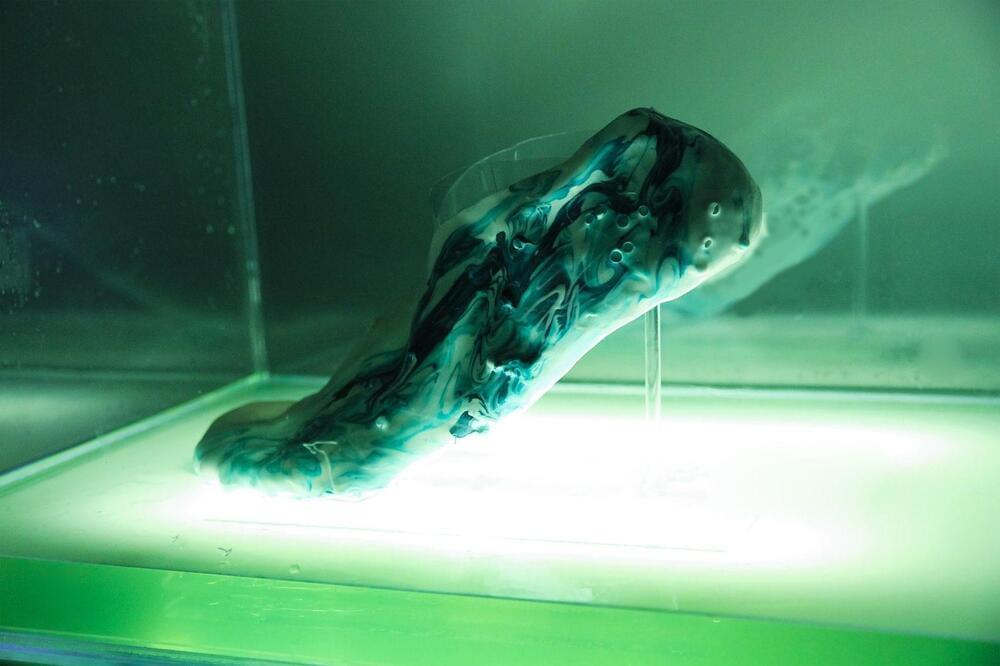Year 2013 😗😁
Shamees Aden, a British designer and scientist, has come up with a concept for a pair of self-repairing shoes of synthetic protocell materials.
Protocells are molecules that on their own are not alive, but when used with other types of protocells can mimic the properties of living organisms. They react to heat, light and pressure like live cells.
Aden’s concept for the shoes is that they could be 3D printed to the exact size of the wearer and when worn the shoes would react to heat and pressure to grow and expand in pressure points where more cushioning is needed. They would be kept in protocell fluid overnight to regenerate.








